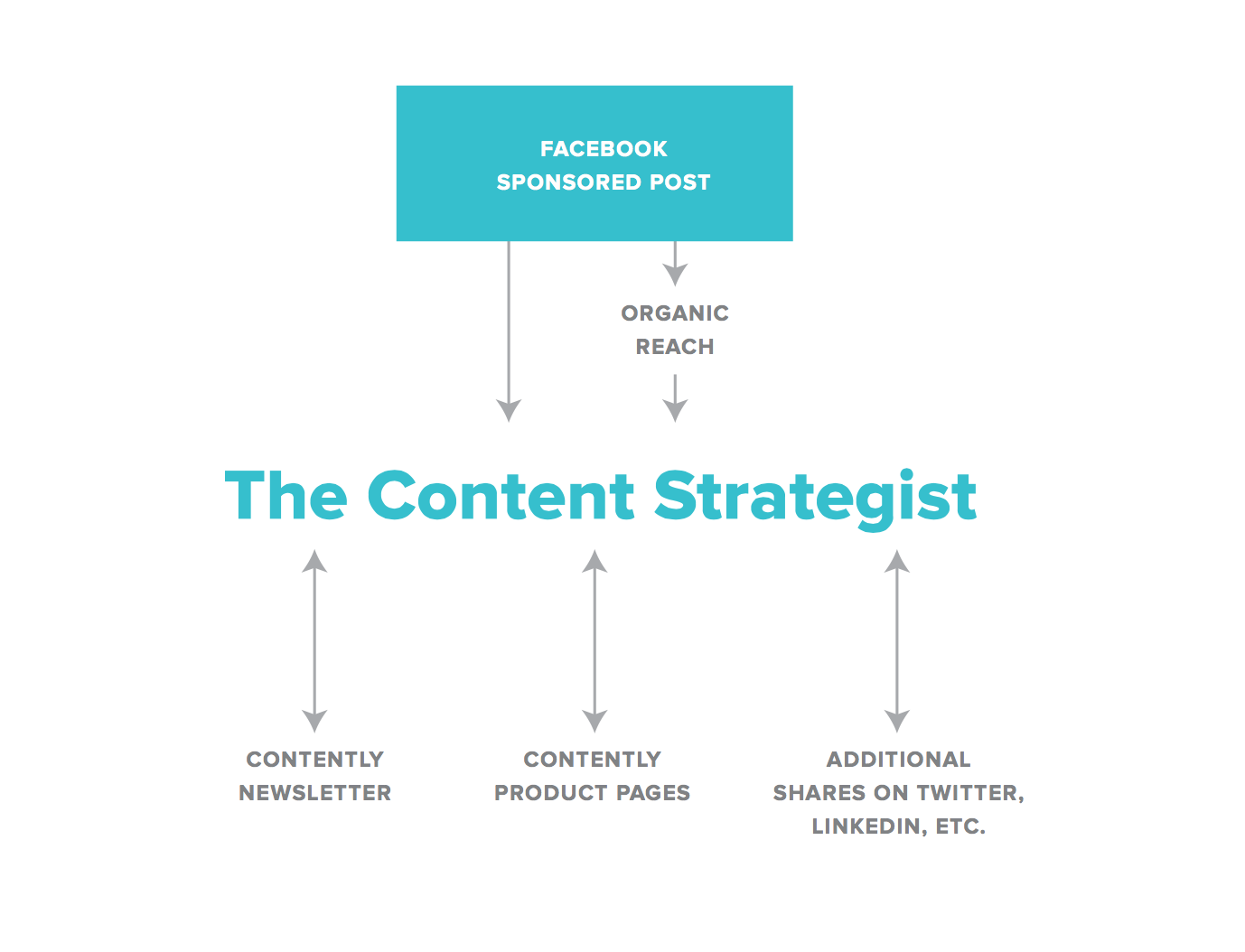Ask a Content Strategist
Ask a Content Strategist: Where Should I Distribute My Content Marketing?
Welcome to your monthly edition of “Ask a Content Guy,” in which I answer all of your most pressing content questions and try to incorporate as many GIFs as possible.
Last month, I covered what content metrics really matter, and the month before that I decoded some game-changing marketing buzzwords.
Today, we’re tacking your content distribution questions, which seems appropriate since media Twitter is still having a collective freakout about Facebook’s decision to deprioritize content sites in the News Feed. I covered all the consequences here, and without a doubt, it hurts. It’s like being dumped by the most popular girl in school. Which is why we need a Mean Girls GIF to help us process our collective feelings.

Whew, I feel better. Let’s move on, examine some larger content distribution questions, and remind ourselves that there are other fish in the sea.
Isn’t paid search easier than devoting hours and money to content creation and hoping for the best?
—Ruth, Cambridge
This is a content marketing question that comes up a lot, so let’s unpack it.
Is paid search easier than devoting hours and money to content creation? Absolutely. My mom can’t figure out how to read email on her phone, but she can run paid search ads like a boss. It’s one of the oldest forms of digital advertising, and Google makes it easy to pull off.
But is it a better strategy than creating content? That depends on what you plan to do with that content. A lot of marketers invest heavily in content creation but have no real distribution plan. They assume that sharing an article with 100,000 Facebook fans and 100,000 Twitter followers will make it go viral—even though, on average, that would only result in a couple hundred clicks at best. If that’s your approach, then yes, save your time and money, and stick with paid search.
But if you’re going to put a smart distribution strategy in place, content is the way to go.
Let’s start with just search. There’s a massive difference between ranking organically for a key term and paying for ads to run against that term. It’s like the difference between winning a penthouse apartment in Tribeca with no property taxes and paying $3,000 a month for a shabby studio with weird yellow walls. People are 8.5x more likely to click on an organic search result than a paid one, and a piece of content that ranks well for a key term will pay for itself exponentially in value over the long haul.[note]PPC and SEO can be used effectively together as well, especially when you’re first starting out. BrightEdge has a great guide here.[/note]
But today, there are so many other places that content can benefit you. It can have a long-term impact on social. It can help you build a devoted audience. It can make your website more dynamic and play a key role in the buyer journey. It can even win you a free trip to speak at a conference in New Orleans!
SPITTING FIRE ON THE TRACK. (marketing track.) #collisionconf pic.twitter.com/qiDZdxNH6e
— Joe Lazauskas (@JoeLazauskas) April 26, 2016
But where do you start, and how does it all fit together? That brings us to your next question…
So we’ve started creating great content relevant to our industry. How do we push it and get it out there? What are some tips for showcasing your content—Google ads, building relationships with other content marketers, etc.? Where do we begin?
—Lisa, St. John’s, Newfoundland and Labrador, Canada
We live in an era of distributed content, when the sheer number of places that you can publish content and reach people will make you feel like this dude:

When you’re just getting started, the first thing you need to do is launch an email newsletter and give it tons of love.
The email newsletter will serve as the foundation for your entire content marketing program, and if you don’t get it right, you’re screwed. Unlike social or SEO, it’s a direct line to your audience that you control. And it’s the easiest way to build a devoted readership that comes back every day.
If you don’t have an email service provider (ESP) for your content already, I recommend using MailChimp. (We break down some other options here.) It’s cheap and easy to use, letting you A/B test subject lines and customize send times. Since you want to convert every new reader to a subscriber, you should also heck out SumoMe’s suite of tools. Through SumoMe, we’re able to convert roughly 4 percent of all new visitors to email subscribers.
You may be thinking: Isn’t this an old-school place to start? In 2016, shouldn’t I be snapping my #tbt Instant Article and ‘gramming the entire content experience? You could try, in the same way that you could try to start a successful country music career by singing in the Bleecker Street subway station. A few people will see you, but they’ll probably just wonder what the hell you’re doing.
The beauty of the email newsletter is that it doesn’t just drive reader engagement and traffic in a vacuum. Instead, it sets off a waterfall of traffic that spreads across social networks. Every day, The Content Strategist newsletter drives thousands of readers to our site, and those readers go out and share our content with thousands more.
DIAGRAM TIME!

This is content 101, but a lot of content marketers inexplicably don’t have a newsletter. It’s baffling and a little terrifying.
Next, examine where folks share your content. Those are the social networks where your company should be most active. There are a million different strategies for social, but for now, let’s just focus on sharing links to your stories. Facebook, Twitter, and LinkedIn are requisites for most companies.
You also probably want to invest in paid content distribution. If you’re going to spend $400 on an article, spending an extra $50 to ensure that twice as many people see that article just makes sense, assuming that traffic is high quality. And the best way to buy high-quality readers is through Facebook.
Facebook may be terrible for organic reach, but its targeting capabilities are tremendous. You can target by age, gender, location, job, pages liked, past site visitors, and a slew of other factors. If your content is really good, you should be able to drive readers for about $0.10 a click.
Additionally, you’ll want to set unique UTM parameters on those links using Google’s URL builder so you can make sure these new visitors actually spend time with the piece instead of just bouncing. With parameters in place, you can also track how well visitors convert to email subscribers or visit other sections of your site.
The beautiful thing about paid content distribution is that you buy a lot more than just clicks. If your content is good, a lot of those new readers will become loyal email subscribers and organically share your content with their networks. (You should gain a new email subscriber for every $5 you spend on paid content distribution.) Some readers might even perform more high-value actions, like visiting a product page or requesting a demo. And popular articles will rank well for search. It’s beautiful, and yes, it deserves its own diagram:

Once you get these owned content fundamentals in order, it’s time to start thinking about going beyond the blog and getting into distributed content—the modern media term for creating content that’s made specifically for social platforms. Think Facebook Instant Articles and auto-play videos, Instagram video, Snapchat, YouTube, Medium, LinkedIn Pulse, and other platforms that let you reach tons of people. That’s a giant topic in its own right, but we’ll get to it in another column soon.
Should I use YouTube or Vimeo for a business video channel?
—Joe, Leicester
YouTube. That way your videos will rank for search if you drive enough views. However, Vimeo does look better, so I’d recommend using it for any promotional videos on your website.
What’s too much—or not enough? How can you measure it?
—Kathy, Denver
Measure it in love, Kathy. In love.
Image by GettyGet better at your job right now.
Read our monthly newsletter to master content marketing. It’s made for marketers, creators, and everyone in between.




